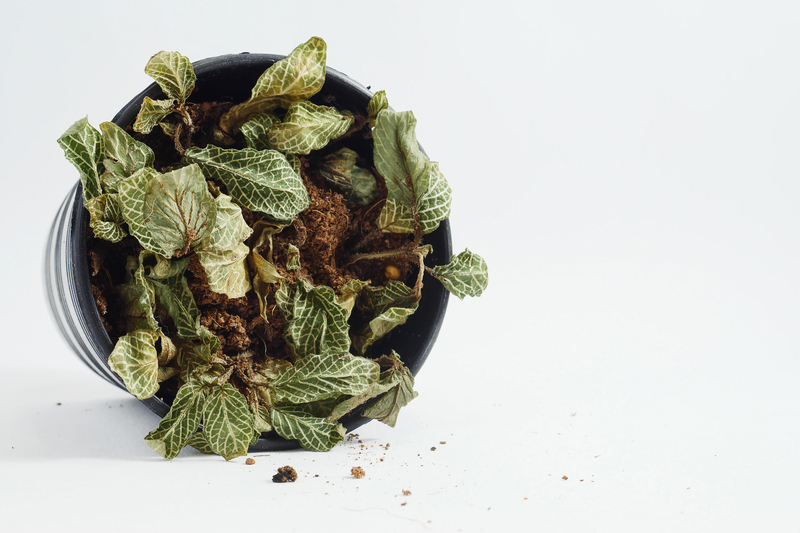Simple Steps to Protect Your Lawn from Summertime Drought Damage
Summertime drought can wreak havoc on even the healthiest lawns. Prolonged periods of heat and little rain cause grass to turn brown, plants to wilt, and landscapes to lose their vibrant appearance. However, by taking practical measures and understanding proper lawn care techniques, you can minimize lawn drought damage and ensure your yard thrives all season long. Explore our comprehensive guide to protecting your lawn from summertime drought, packed with proven strategies, expert advice, and easy-to-follow steps.
Why Is Drought Protection Important for Your Lawn?
During hot, dry months, grass can quickly suffer as surface soil dries out and roots are deprived of necessary moisture. Persistent water stress may lead to:
- Brown, patchy grass that becomes thin and sparse
- Increased weed infestation as weak grass loses the competition for resources
- Soil erosion and compaction
- Long-term damage that's difficult to reverse once the drought breaks
Preventive care during summer not only keeps your lawn looking lush but also saves time, money, and effort. By taking crucial steps, you'll increase your grass's resilience against heat and drought stress and help your turf rebound quickly once better weather returns.

Understanding Your Lawn's Drought Tolerance
Different grass species have varying levels of drought resistance. Warm-season grasses like Bermuda, Zoysia, and Buffalo are more tolerant, while cool-season grasses such as Fescue, Kentucky Bluegrass, and Rye are more susceptible to drought damage.
Assessing Lawn Health Before Drought Hits
Get to know your lawn's current condition before the summer heat intensifies:
- Check grass color and density
- Look for signs of pest or disease problems
- Test soil moisture at 2-4 inches deep
Healthy, well-established lawns have deeper root systems that handle drought stress more efficiently. Consider overseeding, aerating, and fertilizing in spring or fall to prepare for challenging summer weather.
Essential Steps to Protect Your Lawn from Summertime Drought
Implement these vital practices to safeguard your lawn from drought and enjoy green, sturdy grass through the season:
1. Water Wisely to Maximize Soil Moisture
Proper watering is the cornerstone of drought protection. Here's how to keep your grass hydrated without wasting precious water:
- Water deeply, less frequently: Irrigate your lawn early in the morning no more than twice per week, applying about 1 inch of water each time. Deep watering encourages roots to grow downwards, making them more drought resilient.
- Avoid evening and midday watering: Watering during the heat of the day leads to rapid evaporation, while nighttime irrigation can promote disease.
- Use smart irrigation systems: Upgrade to drip systems, soaker hoses, or computerized sprinkler timers that adjust for rainfall and temperature conditions.
- Check for water runoff: Prevent wastage by ensuring water penetrates soil instead of flowing off compacted areas.
2. Raise Your Mowing Height
Taller grass shades the soil, helps retain moisture, and encourages deeper roots:
- Set mower blades higher--generally between 3 and 4 inches for most grass types in summer.
- Never remove more than one-third of the grass blade in one mowing session.
- Leave grass clippings on the lawn to recycle nutrients and reduce water loss.
3. Lawn Aeration and Soil Management
Compacted soil restricts root growth and limits water infiltration. Consider these actions:
- Aerate annually in spring or fall to create small holes and allow better air, water, and nutrient movement.
- Add organic matter, such as compost, to improve soil structure and moisture-holding capacity.
- Test soil pH and adjust as needed so grasses can absorb water and nutrients efficiently.
4. Mulching for Moisture Retention
Mulch isn't just for flower beds! Applying a thin layer of organic mulch to problem areas and around trees or garden beds in your lawn provides several benefits:
- Reduces evaporation from soil
- Moderates soil temperature, protecting roots from heat
- Prevents weed competition for precious water
Use natural materials like shredded bark, wood chips, or leaf compost for best results.
5. Avoid Stressful Activities During Drought
During periods of severe water restriction or extreme heat:
- Pause fertilization: Fertilizer can further stress already struggling grass and create excessive growth that demands more water.
- Limit mowing--only mow when essential and with sharp blades.
- Hold off on new plantings, dethatching, or aggressive weeding until favorable conditions return.
6. Control Weeds and Pests Proactively
Unwanted plants and insects compete with your lawn for limited water and nutrients, especially in tough conditions:
- Apply pre-emergent weed controls in early spring to stop weeds before they start.
- Treat any visible pests with targeted, lawn-safe treatments, and remove weeds by hand to avoid chemical overuse.
- Promote a thick, healthy turf to naturally crowd out invaders.
7. Select Drought-Tolerant Grass Varieties
If you live in an area prone to drought or are planning to renovate your lawn, consider opting for grass types that have a natural ability to withstand dry conditions:
- Warm-season grasses: Bermuda, Zoysia, Buffalo, and St. Augustine are popular choices in southern regions.
- Drought-resistant cultivars: Newer blends of Fescue and Rye offer improvements over traditional varieties for northern lawns.
Recognizing the Signs of Lawn Drought Stress
Acting quickly when you see symptoms of lawn drought damage can minimize long-term effects. Be on the lookout for:
- Grass turning silver, bluish, or gray rather than green
- Wilted, curled, or folded grass blades
- Uneven texture or visible footprints that don't spring back when the lawn is walked on
If your grass begins to brown or go dormant, remember: most established lawns will recover when normal rainfall returns.
After the Drought: Helping Your Lawn Recover
Once rain returns or restrictions are lifted, help your lawn bounce back by:
- Watering gradually: Resume watering slowly to prevent shocking the grass roots.
- Reseeding thin or bare patches with appropriate grass seed.
- Fertilizing lightly to support fresh growth when the lawn begins to recover.
- Continuing proper mowing and soil care to rebuild turf density and strength.
Smart Landscaping Tips for Long-Term Drought Resistance
Transform your yard into a resilient landscape that's less dependent on constant watering:
Incorporate Xeriscaping Principles
- Xeriscaping focuses on reducing water use by grouping plants with similar moisture needs together and using native or adapted species.
- Replace areas of high-maintenance turf with ornamental grasses, wildflowers, or groundcovers that naturally thrive in your local climate.
Install Rain Barrels or Greywater Systems
- Harvest rainwater from rooftops for use on your lawn and gardens during dry spells.
- Reuse greywater from showers or laundry (check local regulations) to sustainably irrigate landscape zones.
Reduce Lawn Size Where Practical
- Expand mulched beds, hardscapes, or patio spaces to limit areas that require frequent watering.

Frequently Asked Questions about Lawn Drought Protection
How often should I water my lawn during a summer drought?
Water deeply only once or twice a week, providing about 1 inch each time. Overwatering can cause shallow roots and increased disease risk. It's better to water less often but more thoroughly to encourage healthy, deep root systems.
Is it okay for my lawn to turn brown during a drought?
Most grasses can survive several weeks of dormancy. The brown color is often a survival mechanism. As long as the grass crown (the base of the plant) remains alive, your lawn should recover with cooler weather and ample rainfall.
Should I fertilize my lawn during hot, dry periods?
Hold off on fertilizing during droughts. Feeding your grass while it's stressed can do more harm than good, potentially burning roots or causing unnecessary growth that your lawn cannot sustain with limited water.
What's the most drought-tolerant type of grass?
Bermuda and Buffalo grasses are widely regarded as the best for drought-prone areas, followed by Zoysia and St. Augustine. For cooler climates, consider newer blends of Tall Fescue designed for increased drought resistance.
Conclusion: Keep Your Lawn Healthy and Strong During Drought
Protecting your lawn from summertime drought damage requires a combination of smart watering, mowing, soil improvement, and patience. By implementing these simple steps, you'll conserve water, save money, and enjoy a beautiful, thriving landscape all season long--even in the face of Mother Nature's toughest challenges.
Don't wait for brown grass or scorching heat to take action. With these straightforward methods, your yard can stay resilient, green, and gorgeous, ready for family, friends, and outdoor fun all summer. For more expert tips and local advice, consult with a professional lawn care specialist or your local cooperative extension agency.
Protect your lawn from drought damage now--your summer oasis is worth it!